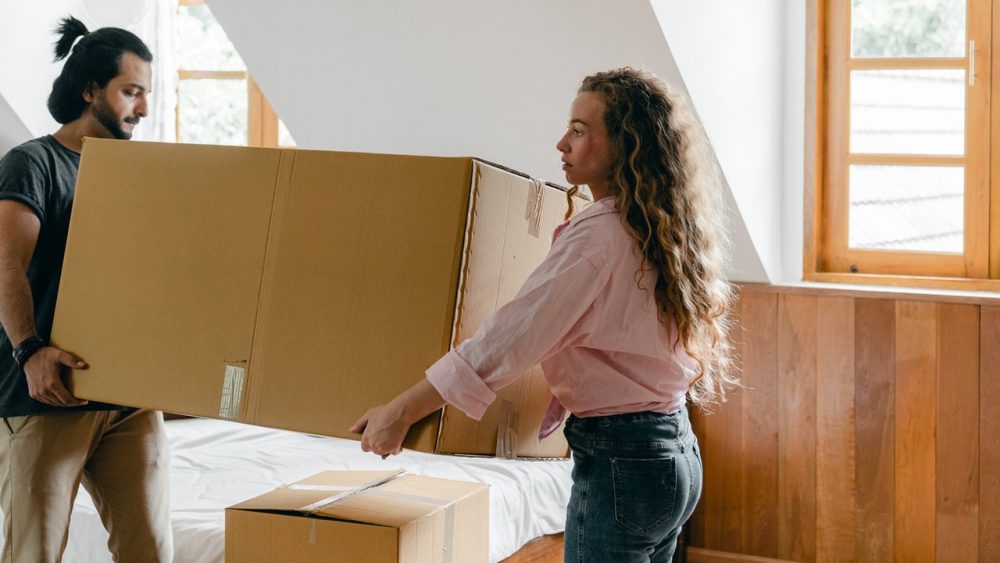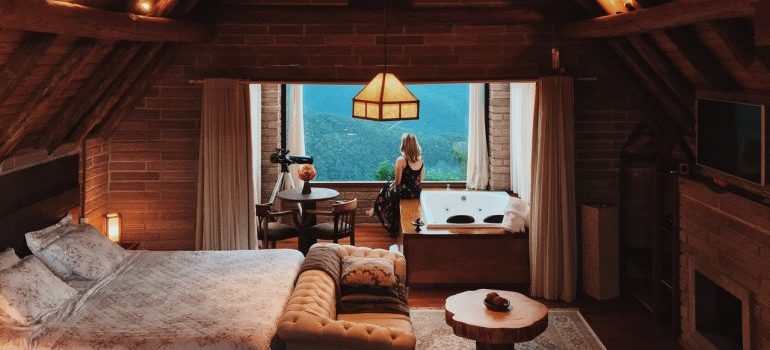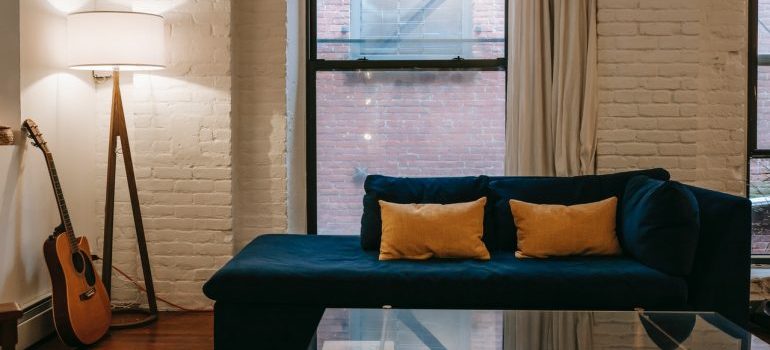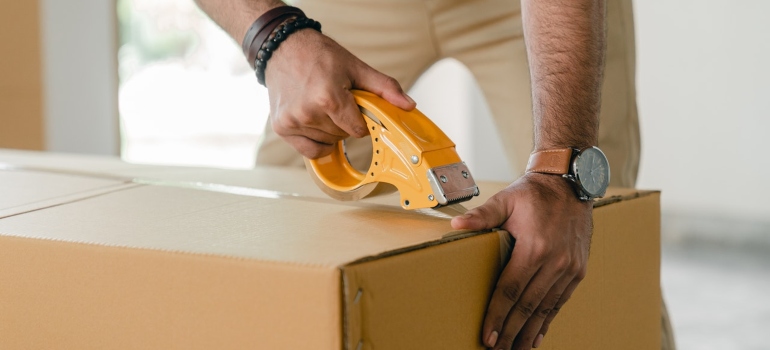Guide to decluttering your basement & attic
get a quote
Even the most organized households can accumulate clutter, often hidden away in basements and attics. Dealing with this clutter can feel overwhelming, whether confined to a single room or spread throughout your living space. That’s why our Lynnwood self storage pros have created this comprehensive guide to make decluttering your basement and attic a fast, smooth, and stress-free process. Follow our essential tips, and you’ll transform your home into a well-organized, clutter-free haven in no time!
Why decluttering matters
Decluttering your basement and attic is an essential step towards improving your home and lifestyle. Here’s why it matters, especially for Seattle area residents:
- Maximize Space: Basements and attics often become catch-all storage areas, filled with items that are rarely used. By decluttering, you can reclaim valuable space for more practical uses, such as a home office, gym, or extra living area.
- Reduce Moisture and Mold: Seattle’s damp climate makes basements and attics susceptible to moisture and mold. Removing clutter allows for better air circulation and easier identification of potential moisture problems, helping to maintain a healthier home environment.
- Improve Home Value: A clean, well-organized home is more attractive to potential buyers. As you declutter basement and attic areas, you enhance your home’s appeal and potentially increase its market value.
- Enhance Safety: Clutter can be a safety hazard, creating obstacles that can lead to trips and falls. Clearing out unnecessary items reduces these risks, making your home safer for you and your family.
- Mental Health Benefits: A cluttered space can contribute to feelings of stress and anxiety. Cleaning these areas and organizing your belongings with the help of Seattle mini storage can provide a sense of accomplishment and improve overall mental well-being.
- Energy Efficiency: A well-organized attic can improve your home’s insulation and ventilation, potentially reducing energy costs. Ensuring that your attic is free from clutter allows for proper insulation and airflow.
Besides, decluttering encourages a more minimalist lifestyle, making it easier to find and access the items you truly need. Moreover, simplified living can lead to a more streamlined and efficient daily routine.

Understanding your space
If you wonder how to declutter a basement or attic, it’s crucial to understand the unique challenges of these areas first. In Seattle, basements are particularly prone to moisture and mold due to the damp climate. Focus on waterproof storage solutions, like plastic bins with tight-fitting lids, and regularly check for leaks, especially after heavy rains. Proper ventilation is essential, so consider installing a dehumidifier and regularly inspect air vents to keep humidity levels in check.
Attics in Seattle can experience extreme temperature fluctuations, becoming very hot in the summer and cold in the winter. Ensure your attic has proper insulation to protect stored items and improve your home’s overall energy efficiency. Good ventilation is also crucial; make sure attic vents are clear and functioning, and consider installing an attic fan to enhance airflow. Regular checks for pests and sealing entry points will help prevent infestations.
Be mindful of weight distribution in your attic, placing heavier items near load-bearing walls or beams and using sturdy shelving units to keep items off the floor. Understanding these specifics will help you declutter effectively, ensuring your storage solutions suit Seattle’s unique climate challenges and maintain a healthier, more organized home.

Step 1: Planning and preparation
First, set clear goals for your decluttering project. Define your objectives, such as creating more storage space, establishing an organized workspace, or maintaining a clean environment free of allergens. Allocate specific times for decluttering sessions, taking Seattle’s weather patterns into account. For instance, plan indoor activities for rainy days. Gather essential supplies like sturdy boxes, garbage bags, cleaning supplies, and moisture absorbers to ensure you have everything you need to start the process smoothly.
Step 2: Sorting and categorizing
Begin with a manageable area to avoid feeling overwhelmed. Use the Four-Box Method: label boxes as Keep, Donate, Sell, and Trash. Methodically go through each item, deciding which box it belongs in. Consider the local climate when making decisions—keep necessary items like rain gear, and consider donating or selling rarely used winter sports equipment. The Four-Box Method will help you systematically reduce clutter and make informed decisions about what to keep and what to discard.
Step 3: Dealing with sentimental items
When it comes to decluttering your basement and attic from sentimental items, evaluate their emotional value versus practical use. Take pictures of sentimental items to preserve memories without keeping the physical objects. Create a memory box for truly meaningful items, but be mindful of Seattle’s smaller living spaces and limit the size of this box. Balancing emotional attachment with the need to declutter ensures you keep memories alive without unnecessary physical clutter.
Step 4: Organizing the keep box
After sorting, organize the items you’ve decided to keep by category, such as holiday decorations, tools, and seasonal clothing. Use clear, labeled containers for easy identification. Maximize your storage space by utilizing practical and reliable mobile storage containers Seattle offers or stackable bins and pegboards.

Step 5: Disposing of unwanted items
For items you no longer need, identify local charities or organizations in Seattle and nearby towns that accept donations, such as Goodwill or Seattle Children’s Thrift Store. Sell valuable items on online marketplaces like Craigslist, OfferUp, or Facebook Marketplace, or participate in neighborhood garage sales. Responsibly dispose of broken or unusable items, taking advantage of Seattle’s recycling programs and waste management services to minimize your environmental impact.
Step 6: Cleaning the space
Once you’ve decluttered, deep clean the area by vacuuming, dusting, and mopping. Use dehumidifiers to reduce moisture levels, a common issue in Seattle. Check for mold and mildew, clean air vents, and consider using air purifiers to maintain good air quality. A thorough cleaning will help create a healthier environment in your basement or attic.
Step 7: Maintaining a clutter-free environment
To keep your space clutter-free, schedule regular check-ins and periodic decluttering sessions, such as seasonal cleanups. Adopt a minimalist approach by being mindful of bringing new items into the space, focusing on quality over quantity. Develop a system for organizing and storing new items in nearby Bainbridge Island self storage, such as labeling bins and creating a storage map. Ongoing maintenance ensures that after decluttering your basement and attic, they remain organized and functional.
